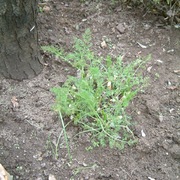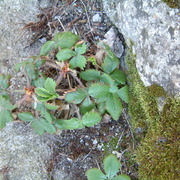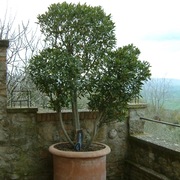ISSUES,INSIGHTS AND COLOURFUL MOMENTS-FROM THE DESK OF AN ENGLISH AUTHOR.
ISSUES,INSIGHTS AND COLOURFUL MOMENTS-FROM THE DESK OF AN ENGLISH AUTHOR.
In my last blog I drew it to a close mentioning the edible possibilities found in wayside hedgerows. A reader kindly drew my attention to ‘Nettle’, which in my youth was avoided like the plague, having fallen into a patch dressed only in a pair of shorts. This was an event experienced in my scouting days, and the inevitable summer camps, which nearly always saw me unfolding my sleeping bag on a nest of ants. I have never been lucky in such outdoor activities, and gave up the esprit de corps for safer pursuits, and the young lady next door.
At fourteen years of age the culinary advantages of the hedgerow had not managed to permeate into the little grey cells of a youth obsessed with sausages, and anything made of potatoes. That was to come with wife number ‘only one’, who heard that the venomous formic acid, contained in the stinging hairs that encrust the leaves of nettle, was absent in their tender state, and that when boiled, are an excellent substitute for asparagus. You think not? Hardly having much to do at the time with asparagus, and in a pioneering mood, the young nettle leaves were duly picked and boiled. I cannot say I am now an expert on nettles, but I have developed a fondness for asparagus!
I must enter a caveat at this point. I am not convinced that the herbs found in English gardens, that a witty gourmand once described as ‘epicurean weeds’, are quite as wholesome as those found in Tuscany, where the use of fertilizers, per se, are still eschewed for humus, or a good bit of dung. Biological habits, along with habitats, seem to have become something of a religion over here, and the herbs mentioned in that earlier blog were only a ‘taste’ of nature’s foibles in our garden, and perhaps if you’re discreet with the chemicals, in your garden too. So, if you’re in a tolerant mood, I will finish the discourse
I am not a botanist, and something of a Neanderthal adventurer in the estate of my ‘trouble and strife’, but in admiring her handiwork I notice these indolent trespassers who, by chance, may turn out to have a culinary use. This has necessitated delving into the dark corners of my bookshelves in case any of these herbs turn into ‘widows weeds’! Like me, you probably remember being lectured on the dire consequences of eating the tempting berries of Deadly Nightshade, the infamous Belladonna, genus Atropa. I remember Atropos was one of the Fates who cut the thread of human destiny. So very apt. You may now stop admiring my knowledge of such things botanical, as I admit it is newly acquired.
I had, it’s true, made an initial sortie into Tuscany’s vast tracks of forest in search of mushrooms, and returned with a gargantuan load. In October they are plentiful, but it’s a game of chance, as the hunting season commences in September where crashing around in the undergrowth is vaguely reminiscent of a wild boar’s perambulation. The inevitable consequences, given the prevalence of too many Benelli game rifles loafing about in the boscage, could be fatal. Every year, four or five unlucky souls are thus dispatched. Therefore, you never go alone, and spend the whole time calling to each other at megaphone volume. As an unlikely ‘instant expert’ at finding the illusive Trombetta da Morto, a pitch-black mushroom that is, quite rightly, highly rated in culinary circles hereabouts, I instantly took this to be a bad omen, and confined myself to the garden.
Back on this safe patch you will find a lofty, soaring Wild Fennel (Finocchieto) that has established itself next to an almond tree, and seems determined to outgrow it. I think not, but at a height of over eight feet (c. 2.5 metres) a little pruning is necessary every year. The plant, however, is not an intruder, being procured from a hedgerow next to the dual carriageway of the old via Aurelia. Apparently they are very common close to the sea, and no one was sure how they would adapt to being nearly two thousand feet up in the air. Rather well, it seems! I should explain that I am not describing the Florence fennel, the Italian Finnochio, which is that well-known bulbous root vegetable, but the lanky, feathery herb, whose delicate hair like fronds are as near as you’ll get to recognising the domestic version. No matter, they make excellent stakes to spear together the famous and delicious Fegatello di Maile con la rete, that is pork liver wrapped in caul fat – a classic Tuscan dish. The aniseed zest of the fennel imparts a whole new dimension to its flavour. This may be fortunate as fennel has a reputation for reducing ‘avoirdupois', and too many of our friend Mari Luisa’s Fegatelli may leave you in dire need of a little lightening. Here you see it after a haircut.


and also Strigoli,

they can be made to conform to a tidy manner during their spring growth, if not a truly cultivated one.
Yet another more benign example of this integration is Borage, which hogs the border of that final terrace like a wooly terrier. Its brilliant bright blue flowers in a silver grey hairy overcoat are very handsome. My wife makes little anchovy savouries decorated with them to please our guests. I remember it was an essential ingredient in claret cups, and believe is still an ingredient in Pimm’s No 1 – the infamous original gin sling. I am told Pimm’s is most agreeable when diluted with Champagne, but what is the point of champagne if you’re intent on spoiling its gorgeous bouquet! The juice of borage has the smell and flavour of cucumber, which is for that reason, sometimes substituted for Borage in claret cups. The ever-resourceful Victorians candied the flowers, and used them on canapé. The larger leaves used to be made into a cordial, while the smaller, tender ones, are also still being used in salads hereabouts.

Capers I use a great deal, and every stone wall with reasonable crevices facing the sun procures substantial bounty. You can thus pick your own unripe berries, and bottle them, though they aren’t, as far as I know, found in any walls down northern European lanes! Occasionally, home bottled capers arrive with guests, along with a heart stopping home made digestivo flavoured with aniseed, Pimpinella anisum. Pellegrino Artusi, that doyen of Tuscan food despite being a native of Emilia Romagna, and the author of ‘Science in the Kitchen and the Art of Eating Well’, seemed overly fond of them when pickled in vinegar, which I’m assured is the normal Tuscan method. Further south they seem to prefer them salted. You may take your pick, as they emerge with quite a different character. Artusi squeezes the vinegar out before using, and the salt aficionados let them loiter in milk for a while. In either case you need to be circumspect, as the addition can be quite astringent.
It would probably be remiss not to mention Basil, but as it grows as madly as the weeds, and a wild variety of the same family as Nepitella can be found almost everywhere - except in our garden - then little more can be said about it. I have been put in charge of two troughs prepared for Basil, with strict orders to stay there, and not overeach myself. Basically, I keep them watered, and the tops pinched out. Secretly, I believe I was put in charge of them solely because the chief gardener found a very lage toad buried amongst them having a nice cool nap. A good sign to have a resident toad, apparently. We have two varieties of this herb, the standard sweet basil and a dwarf Greek basil - Ocimum basilicum and Ocimum minimum. No prizes for which is which. If you select the best leaves of the large variety towards the end of the season, they can be cleaned and dried, then seal-wrapped in cling film packs, and placed in the deep freeze. Basil in January is a real bonus.

Hedgerows and fields were not only the larder for poor folks, but also the pharmacy. Stretching my mind back to when the bottom terrace of our garden resembled a tip from a building site, a solitary poppy, with pale mauve petals, appeared among the debris. It was not so much a late arrival as a last survivor, as the powers to be had other plans for the neighbourhood. A local informed us that once they were quite common as the capsules were used to make a fomentation, or poultice, that could be rubbed into the gums of teething babies. Looking further into this new arrival disclosed it was Papaver somniferum, the infamous ‘hallucinator’, an infusion of which yields opium, laudanum, and morphine. Apparently it is banned, but I’m not quite sure how you can eradicate a wild plant with a will of its own. Strangely, as if to disprove a point, in our new garden after a couple of seasons it disappeared, and has never returned. The terrace had certainly improved since then. Something of the same nature, though not a herb or a weed, can seemingly be obtained from the large yellow trumpets of courgette flowers. When dried they can be distilled into a mild opiate to be used during childbirth. Whether this was for mother or child I never ascertained. I understand it is called ‘Flower of sleep’ (Fiori Dormire) in Calabria. In Tuscany, on the other hand, they are turned into a delicate and delicious sauce for pasta, or if you’re not watching the avoirdupois, battered and fried. You need quite a few for the former enterprise.

No garden could be complete without a bay tree. Though they are often found self seeded in the wild, ours are dotted about the place by design, either in the ground or in large ceramic pots. In the soil it is a chancy business as they are extremely spirited and strong growers, demanding constant attention by the marital gardener who shapes them rather artistically with the pruning shears. A large bottle of dried leaves has found a home in the kitchen cupboard, as I’m particularly partial to them with baked potatoes, as well as the roasted versions. I was not aware until recently, that the dark purple black berries I’m ordered to sweep up every now and again, were much prized by the Romans who crushed them with other herbs to add to their cooking. In the United Kingdom a few of the berries were said to aid a difficult childbirth, but should not be administered earlier in case it precipitated an abortion. Perhaps we’ll stick to the dried leaves, and continue sweeping up the berries

Which brings us back by a tortuous ‘root’ to Nettle, which has an antidote in the form of Dock. This I learnt while practicing falling into those nettle patches. The milky sap is a very useful balm for the resulting rash. However, on a more contemporary note, one of those delightful, and very old ladies you always used to find in an Italian hamlet, frequently passed by our gate on her way to forage in the hedgerows of the lane. One day, noting the addition of Dock to her crop, she informed me that thereabouts it is used for ulcerations, cleansing the liver, and sundry parts. I was too polite to enquire about the meaning of the latter. As the lady lived to be over ninety I’m inclined to believe her, but where cooked Dock’s concerned, I think I’ll miss out on that experiment.
So there you are. Perhaps if we wish to live to an old age we should look closer at these weeds. That is, as long as it’s not the smoking variety!